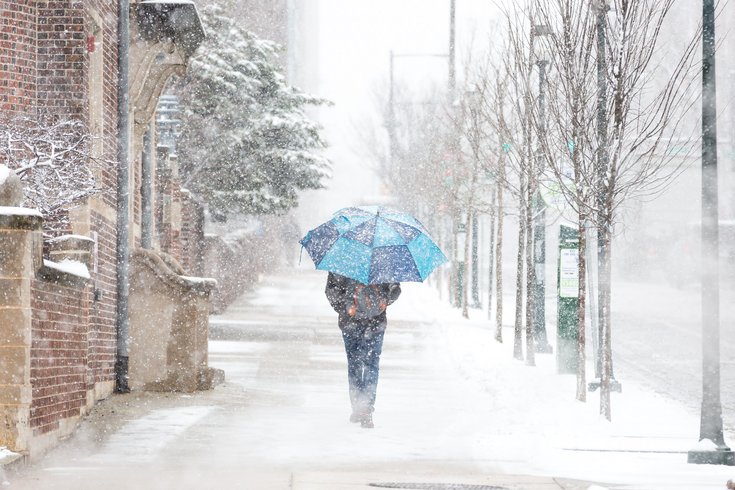
January 06, 2025
 Thom Carroll/for PhillyVoice
Thom Carroll/for PhillyVoice
Some studies have found a link between snowstorms and increased ER visits for fall-related injuries. Avoid slipping on ice by taking small steps, walking slowly and wearing sturdy shoes.
Snowstorms bring more than just flurries. Even relatively minor ones pose health risks since the cold temperatures can lead to frostbite and hypothermia, and shoveling snow can trigger heart attacks.
Navigating slushy sidewalks is another hazard. A five-year study of Philadelphia-area hospitals found that emergency department visits due to falls more than doubled after winter storms. Though that study found the most falls among adults ages 18-64, slipping on snow or ice is a particular concern for older adults. Falls are the leading cause of injury for those 65 and older, and fall-related deaths among this population have been increasing. The Centers for Disease Control and Population found that the fall death rate for older adults increased by 41% between 2012 and 2021.
That makes precaution all the more important for pedestrians during snowstorms. Health experts generally recommend taking small steps and keeping a slow pace to remain upright. For inspiration, look to Antarctica's famous waddlers.
"Walk like a penguin" is common advice because, as Alberta Health Services explains, the birds are "low and slow" and use their wings to maintain balance. Though humans don't have wings, we can emulate a penguin's gait by pointing our feet outward, walking flat footed and using our arms to keep steady. Keeping one's legs apart and taking short steps are also key to a successful waddle.
The right footwear is also important. Look for sturdy shoes that fit well and have good traction. The American Red Cross recommends adding ice cleats, which can be attached to the bottom of a boot, for extra grip.
Look for and use handrails when you can, and if you use a walking aid, don't forget it. Ice cleat attachments also are available for canes.
Slips still can happen even with precautions in place. If you fall, resist the urge to spring up too quickly. The Mayo Clinic suggests resting for a minute and checking in with your body. Wiggle your toes and fingers, and try to figure out if you broke anything — particularly an ankle. Moving too quickly on a sprain or fracture could worsen the injury.
If at all possible, "prepare" for a fall by leaning forward into it for control. Landing sideways is best, ideally on your butt or thighs. Twist your shoulder to help protect your head from impact, and keep your knees bent. Here are a few more tips from Harvard Health:
• Swing your arms to direct how you fall
• Try to aim yourself away from other people or objects
• Also aim for open areas and grass or dirt over concrete
• Relax into the fall, landing like a sack of beans
• Try to roll into a ball on your side as you hit the ground
The safest way to prevent falls in the snow is to limit walks while the storm continues. But when venturing outdoors is unavoidable, remember: Be a penguin.
Follow Kristin & PhillyVoice on Twitter: @kristin_hunt
| @thePhillyVoice
Like us on Facebook: PhillyVoice
Have a news tip? Let us know.